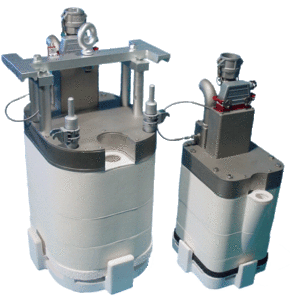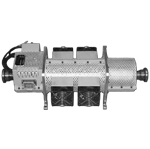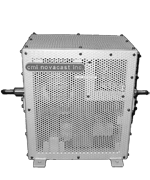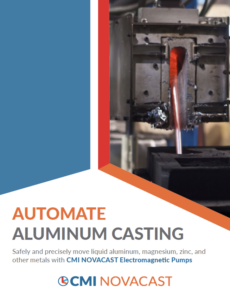The Top 7 Reasons Foundries Use Electromagnetic Pumps
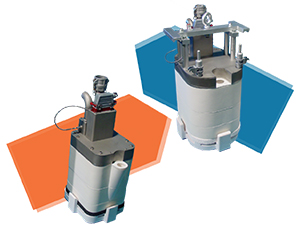
The demands placed on both low and high tolerance foundries can result in a bit of a Catch-22.
Foundries are expected to improve throughput, eliminate downtime and reduce scrap rates. Those goals can be difficult to achieve in even the most ideal circumstances – but can seem nearly impossible in the standard foundry environment.
The very nature of work done at foundries – melting and ladling hot, liquid metal – leads to regular employee burnout, high turnover and, subsequently, increased risk of error, recasts and scrap.
That means the majority of foundries find themselves in scenarios where they are endlessly asked to do far more with far less.
Luckily, a solution to the foundry workflow conundrum exists: electromagnetic (EM) pumps.
In simple terms, EM pumps move liquid metal using magnetism. EM pumps are fully enclosed systems installed inside furnaces that use no moving parts. Foundries that use EM pumps enjoy a host of benefits that allow them to continuously improve processes, reduce costs, and increase worker retention.
Below are the seven reasons the country’s top foundries use EM pumps.
1. Time-Tested
The first EM pumps were developed to pump liquid sodium in nuclear cooling applications in the 1970s.
Shortly after their invention, the pumps were adopted by the foundry industry to automate casting in commercial applications. In the decades since, EM pumps have proven to be a reliable way to increase metal quality and reduce scrap rate while making the work more efficient and safer for employees.
2. Designed for Aluminum Casting
EM pumps, like the PG 300 and PG 450, were designed specifically for aluminum casting applications.
While the pumps were designed to work with aluminum, they are not limited to it. Both pumps can also be used with magnesium, zinc and other metal alloys with temperatures up to 1472° F (800° C).
3. Safer for Workers
Hand-ladling is dangerous, back-breaking work. Foundry employees work long days, mostly on their feet, lifting incredibly heavy ladles and casts in the blistering heat.
Spills can be catastrophic: liquid aluminum eats through steel and sticks to skin, causing hard-to-heal burns.
EM pumps are a salve for the danger – and burnout – associated with traditional foundry work. Because pumps draw metal from below the furnace’s surface, they eliminate the need for hand-ladling altogether and greatly reduce the risk of spills.
Foundries that use EM pumps are not only safer for workers but also enjoy greater productivity.
Overworked employees are more prone to errors, which often result in increased scrap rates and reduced throughput. EM pumps save employees from overwork, and thus reduce the occurrence of human error. Employees are also freed up to work on more rewarding, higher-level tasks – and are more motivated to stick around.
4. Superior Performance
EM pumps perform better and more consistently than other pumps.
Because the pumps are fully enclosed and use no moving parts, no bubble- or oxide-creating turbulence is generated.
EM pumps are also far more precise than other pumps in their class; PG series pumps and their flow rates are computer-controlled. The pumps – available in gravity, bottom-fill, and side-fill options – can store and recall over 600 different custom profiles. This means pumps can fill a wide variety of molds quickly and precisely – and ensure thick and thin portions of molds are filled at the appropriate rate.
5. Improved Metal Quality & Finish
Unlike hand-ladling, EM pumps draw metal from below the surface. This results in improved metal quality and surface finish and helps avoid recasting and downtime.
Because the metal isn’t ladled off the surface – which results in rapid heat loss – it enters the mold at the same temperature it was in the furnace. When combined with preheat ovens and heated launders, this ensures the metal doesn’t experience thermal shock.
To further improve metal quality, each PG series pump is supplied with a metal filtration system that eliminates dross and other contaminants.
6. Increased Throughput & Revenue Generation
The automated, highly controlled (and controllable) nature of EM pumps helps foundries increase throughput and, ultimately, revenue.
PG series pumps, specifically:
- Allow sand casting foundries using gravity pouring to produce up to 120 castings per hour
- Allow sand casting foundries using the rollover scheme to produce up to 90 castings per hour, even with a cast weight of 110 lbs. (50 kg.) per mold
- Allow sand casting foundries using the low-pressure bottom filling to produce up to 200 castings per hour
7. Maximized Yield
The efficiencies and precision made possible by EM pumps have a dramatic effect on foundries’ scrap rates.
Both PG series pumps consistently reduce scrap rates to below 4%. In some use cases, scrap rates are even as low as 1%.
Your Electromagnetic Pump Partner
Since its founding in 1981, CMI Novacast has supplied foundries with EM pumps and related systems (including heated launders, preheat ovens and control systems) that alleviate their most common pain points.
Speak with a CMI Novacast factory expert about your casting application and how electromagnetic pumps can improve your worker retention, production throughput and revenue generation.
